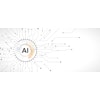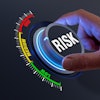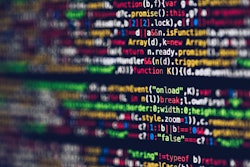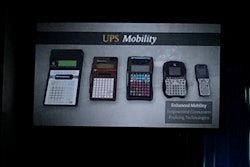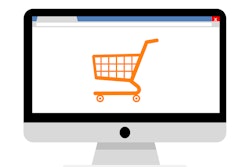
Industry 4.0. The next industrial revolution. This hyper-connected future is already starting to take shape. With businesses that are ready to listen, Industry 4.0 will offer massive insights into the supply chain and its demand-side to provide new benchmarks for efficiency and value.
Industry 4.0 will differ from the current computerized, networked business environment. In this sense, it will be smarter. Cyber-physical systems will communicate and cooperate with each other autonomously across the value chain in real time, introducing a new level of end-to-end visibility across the entire supply chain. By replacing silos of connectivity, Industry 4.0 will cross both internal and cross-organizational boundaries, automating much of the machine-to-machine interaction.
But this means more than data interoperability.
Log in to view the full article
Industry 4.0. The next industrial revolution. This hyper-connected future is already starting to take shape. With businesses that are ready to listen, Industry 4.0 will offer massive insights into the supply chain and its demand-side to provide new benchmarks for efficiency and value.
Industry 4.0 will differ from the current computerized, networked business environment. In this sense, it will be smarter. Cyber-physical systems will communicate and cooperate with each other autonomously across the value chain in real time, introducing a new level of end-to-end visibility across the entire supply chain. By replacing silos of connectivity, Industry 4.0 will cross both internal and cross-organizational boundaries, automating much of the machine-to-machine interaction.
But this means more than data interoperability.
Ongoing globalization and digitalization has increased the complexity and competition for businesses, ushering in new opportunities to optimize their internal operations. They’re recognizing the strategic value their procurement departments can cultivate beyond primarily transactional functions.
The lines between traditional organizational boundaries start to blur between expanding procurement’s collaboration efforts with other departments, such as research and development (R&D), marketing and IT.
For the procurement professional responsible for squeezing the most value out of the supply chain, Industry 4.0 is in some respects a logical outcome of the automation they’ve been progressively deploying for decades. Even so, it represents both a significant change and challenge, according to experts.
Push to Pull
If everything goes according to plan, Industry 4.0 will change the economy from push to pull. Instead of using forecasts to predict demand, businesses will have access to accurate, real-time data. Every component in the chain will be visible to each other with the advancement of IoT and blockchain technology. Actual demand can become the signal, rather than proxies for demand—the business “forecasts” of today.
It all stems from the connectivity of the internet and the immediacy of customer conversations. Globalization and the streamlining of manufacturing were already well underway before social media flipped the pyramid and empowered the consumer. The speed, volume and velocity of social media gives customers the power to influence their peers, and in turn, wield control over brands.
That isn’t to say that analytics will become obsolete—far from it. Rather, existing inputs like inventory, spend, and manufacturing performance will be joined by IoT and social media data. Making sense of this cacophony will require machine learning systems to read changes in the demand side and update the upstream manufacturing and supply processes accordingly.
To be efficient and responsive in such a pull economy, businesses have to attend to these demand signals and react quickly. That means enterprise software, specifically e-procurement platforms, will be at the heart of this engine.
In addition to providing valuable intel on demand, Industry 4.0 will also play a big role in increasing efficiency through the automation of manual activities required to meet this demand. To ensure service-level agreements and pricing are in compliance, smart contracts leveraging blockchain technology will be the logical choice. Smart contracts provide a secure, automated, digital record of goods purchased, sold and delivered, and will be traceable throughout the entire supply chain process.
To this point, the shift from what brands had to sell (push) to what consumers want to buy (pull) has been most apparent in the consumer packaged goods (CPG) industry due to its long and complex supply chains.
However, not all sectors see demand ebb and flow with as much volatility as CPG. The governmental, infrastructure and utilities sectors are seemingly less impacted right now. Even here we can expect to see an eventual shift to a pull economy, with a consequent change in procurement processes and roles.
Automation Obstacles
The dynamic behind Industry 4.0 promises to take data from a variety of underlying systems and processes (e.g., spend, ERP, supply, inventory and production), and make increasingly automated actions. The impact of these actions would, in turn, update the optimization of the whole, for a virtuous circle that connects the pull side of demand to the supply side of incoming raw materials.
In a procurement setting this might mean triggering an e-auction or e-RFP. This extreme automation is occurring in fits and starts. Why? There are a number of reasons, ranging from technical and organizational to economical. For one thing, the underlying systems still exist in silos, and the necessary interoperability standards are still evolving.
Nevertheless, not all companies or people are ready to have their roles radically changed, but that’s why change management exists. The people and processes of the procurement departments of today will be quite different in 10 years.
Preparing for procurement transformation requires participation from all professional levels. Corporate leadership needs to be forward-thinking and strategic. Current directors and managers need to watch the technology landscape, in particular, and be open to pilots. New hires should be open minded, curious and willing to be on projects or teams.
The necessary investments in IoT technology also present its own set of obstacles. Consider that in some sectors, such as mining and industrial agriculture, production equipment may be a mile underground or four miles out in the fields. In the steel industry, it’s common to have 100-year-old equipment, and upgrading or retrofitting this infrastructure won’t be easy or cheap.
Rather than jumping the gun on an exhaustive technological renovation, we can expect tests and pilots with humans acting as guardrails. Managerial oversight is still a job best suited for humans, especially when creating a comfortable transition for how much the company or the consumer will tolerate.
Given these arduous challenges, it’s unlikely that Industry 4.0 will appear quickly or uniformly.
For those looking at where to start, the low-hanging fruit will be internal to each organization because optimizing internal processes won’t require a world of standard protocols to get started.
Many businesses have already begun the transformative process. By implementing strategic procurement platforms, which use machine learning to evaluate partners, performance and contracts, they’re already reporting significant impacts on their supply chains. Yes, Industry 4.0 will supercharge this data-informed model, but it won’t drift far from today’s ultimate goal: delivering quality products, on time, at a competitive price.
The components are there. The plan is in place. All we need now is time, money and commitment.

